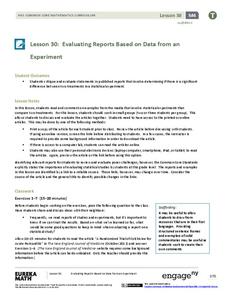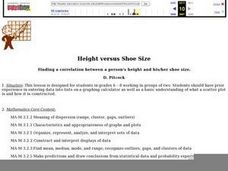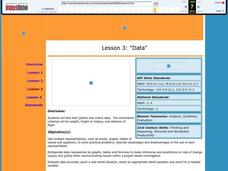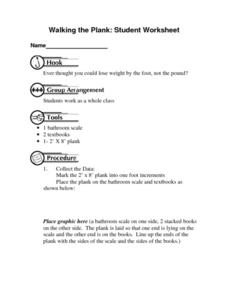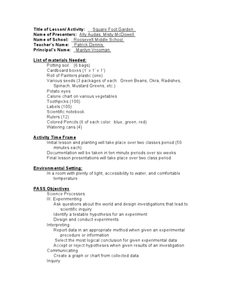EngageNY
Evaluating Reports Based on Data from an Experiment
They say you can interpret statistics to say what you want them to. Teach your classes to recognize valid experimental results! Pupils analyze experiments and identify flaws in design or statistics.
Curated OER
Symmetry in Children's Art Experiences
Read between the lines of symmetry to make important connections between math, art, culture, and nature.
Key Stage Fun
Squeebles Times Tables 2
The Squeebles are back, and this time they are ready to help young mathematicians gain fluency in their multiplication skills. This app allows for practice and testing through a number of fun, and at times, challenging, educational games.
Curated OER
The Blues . Music Education
What ultimately influences a musician's creations? Is it the time in which he/she lives, his/her personal experiences, the music of the time and previous times, or the image the artist hopes to convey? This lesson explores these...
Curated OER
Applied Science - Science and Math Lab (read without sight)
Students consider the senses. In this sight and touch instructional activity, students discover what it is like to function like a person who is blind. They work in groups and individually on various activities to experience this...
Math Stars
Math Stars: A Problem-Solving Newsletter Grade 6
Think, question, brainstorm, and make your way through a newsletter full of puzzles and word problems. The resource includes 10 different newsletters, all with interesting problems, to give class members an out-of-the box math experience.
Curated OER
Exploring Gullah Culture...Through Language and Numbers
First graders examine the culture of the ancient Gullah people. As a class, they practice saying and writing the days of the week and numbers in Gullah. They are read a Gullah folktale and put the events of the story into the correct...
Curated OER
Operation Spaghetti
Find the math in recipes. Young chefs will follow a recipe and investigate the total cost for materials. They measure amounts of food necessary for the recipe and compute the per person cost.
Curated OER
Height versus Shoe Size
Students find a correlation between a person's height and his/her shoe size. They have access to entering data into lists on a graphing calculator and can complete scatter plots. Students read and interpret a scatter plot and use the...
Curated OER
One Step at a Time
Young scholars investigate the customs and habits of other cultures by reading letters from a Peace Corps Volunteer. In this global customs lesson plan, students discuss how analyzing a culture is similar to analyzing art, no two people...
Curated OER
Data
Students collect data from an experiment they perform. In this data lesson, students use multiple representations to solve practical problems; describe advantages and disadvantages of the use of each representation. Then, they evaluate...
Curated OER
Making It Balance
Students listen to story, "The 100-Pound Problem," compare their weight with character in story, and weigh different classroom items using nonstandard units and standard units. They experiment with different items that can make scale...
Curated OER
Walking the Plank: Student Worksheet
In this math worksheet, students will work in a group to experiment with the weight of objects when placed at a distance from a scale (using a plank). Students will record and graph their results.
Curated OER
Show Me The Money!
Students select which bank would best meet their needs. In this lesson plan on personal banking, students write a summary stating which bank and bank accounts best suit their own needs.
Curated OER
Square Foot Garden
Students plant a garden and keep track of it. In this geometrical garden lesson plan, students collect data from their garden twice a week. They graph their finding and figure out how many square feet of growing space each person needs...
Curated OER
How Much is a Million?
Students discover the magnitude of the number 100. The sense of the number is developed by allowing students to experience 100 by counting it, measuring it, feeling it, and doing it, hands-on
Curated OER
Does Clear Water mean Healthy Water?
Learners test their local aquatic site to determine its water clarity. They collect a water sample and measure its turbidity using a sensor, then they repeat the experiment to obtain a second turbidity reading to find the average value.
Curated OER
NUMB3RS Activity: Riding the Waves
High schoolers use the TI-Navigator system to explore vector fields and make predictions. They also identify what a vector field is and that it represents the movement of water. Pupils try to determine where a bottle floating might have...
Curated OER
Henry's Freedom Box
Third graders create a shipping box from a cardboard material. For this measuring lesson, 3rd graders read the book Henry's Freedom Box and discuss the main idea. In the story a slave ships himself to freedom and the students measure and...
Curated OER
Crossroads Blues
The crossroads, and the decisions made and entities met there, are a common theme in literature, pushing readers to examine the choices and encounters that shape life experience. The theme has also been explored in blues music, most...
Curated OER
Math TODAY Challenge - New Color of Money
High schoolers read about the changes in the "new money" and then create a graph to represent various combinations of currency produced.
Curated OER
The Renaissance
In this Renaissance worksheet, students read a 2 page article covering The Renaissance period, answer 5 facts with multiple choice answers and answer 5 statements true or false.
Curated OER
poem "One Inch Tall" from the book "Where the Sidewalk Ends" by Shel Silverstein
Students use the terms: ratio, proportion, and measurement in their description of the life of a person one inch tall.
Curated OER
Changes in Latitudes, Changes in Attitudes
Sixth graders discuss how people, society, and technology change over time through a unit of integrated lessons. In these changes in society lessons, 6th graders discuss the answers to many questions about how changes effect the...


